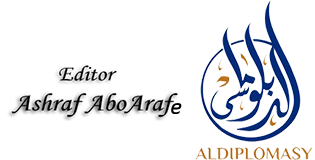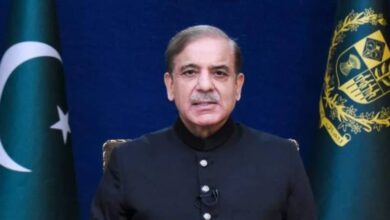
Ashraf AboArafe
There are many charitable fields in which the Kingdom of Saudi Arabia (KSA) is unique. It was the pioneering country, which is referred to as Lebanon, in every charitable, humanitarian and relief work.
One of those pioneering fields in which the Kingdom has taken the lead is the field of separating Siamese twins, as the Kingdom was able, praise be to God, to achieve global leadership and international acclaim by relevant countries and organizations, as well as the families of Siamese twins.
Over the course of 32 years, the Saudi Program for the Separation of Siamese Twins has succeeded in underlining achievements after achievements by conducting 54 successful separation operations for Siamese twins. Allah bin Abdul Aziz Al-Rabiah on December 31, 1990 AD, so that these successes continue until today, as the program has evaluated since its inception 127 Siamese twins from 23 countries, on 3 continents, and performed 54 effective surgeries to separate Siamese and parasitic twins, the last of which is the Iraqi Siamese twins, “Ali and Omar.” .
Dr. Al-Rabeeah promised in an interview with “SPA” that the real process of separating twins began since the operation of the Sudanese twins (Samah Wahba) in the year 1992 AD, which was accompanied by the formation of a specialized team for such operations, and the operation was crowned with success, thanks to God, where (Samah Wahba) lived ) in the Kingdom and completed their studies at the university, and currently they have completed the master’s degree.
And based on the Kingdom’s humanitarian role, it has always received Siamese twins, regardless of race or affiliation, to alleviate the suffering experienced by Siamese twins and their families. So the kingdom became a home for them.
Scientifically, there are no specific causes for conjoined twins, but what science has reached – according to Dr. Al-Rabeeah – proves that conjoined twins only occur in women who give birth to identical twins from one egg and genetically, and this happens in a very rare and small percentage of one in a thousand. .
The percentage of conjoined twins pregnancy increases the darker the color of the skin; In Africa, the rate of giving birth to identical twins is higher than in Europe, and the southern ones are more than the northern ones, and it is necessary for the pregnant woman to visit her doctor periodically from the beginning of pregnancy, and to be assured of the safety and health of her fetus, because the discovery of twins at the beginning of pregnancy has a special path, and in many cases it can Conjoined twins are detected in the eighth and ninth weeks of pregnancy, and it is then possible to know whether or not it is harmful to the mother’s health.
It goes without saying: The medical, human and social repercussions of Siamese twins are heavy on the heart of every father and mother when they look with sorrow and pain at the condition of their two children, who brought them into the world carrying diseases and deformities. However, the Saudi program for separating Siamese twins has restored – after God’s grace – hope to these cases. Humanity, and spread the spirit of optimism about a healthy and bright future, displacing the burdens of conjoined twins anxiety, fear, grief and delusion.
And about the mechanism for evaluating the condition of Siamese twins and what they need, Dr. Al-Rabeeah says: The Saudi program for separating Siamese twins evaluates each twin separately, according to his condition and health condition, to know the common organs and their condition, and as a result, the medical team participating in the operation is determined, for example, the adhesion In the chest, the specialized team is identified in the chest, and sometimes in the spine, so the team specialized in that field is chosen. Thus, each case is determined according to the locations of the adhesions in the twins’ organs, and the Kingdom sensed the importance of this, and these specialties were gathered in one place.
In this regard, the program was able to conduct 54 successful separation operations for Siamese twins, as the Kingdom is full of high-level national medical competencies, modern equipment and devices, according to the latest science findings in this delicate surgical field.
It is obvious that Siamese twins need a lot of things after the separation process, including: periodic follow-up for the presence of physical variables that require continued follow-up by the medical team that performed the operation, and in the event that the twins live in another country, it is necessary to communicate with the specialized team supervising the operation, as well The psychological aspect is of great importance to conjoined twins, as there is what is called the “post-op separation shock”, especially since they are accustomed while they are in their mother’s womb and after their birth during their first months to conjoin them, so the longer the period before the operation, the greater the psychological link between the twins.
The twins also need to share one room, and bring them close to each other. It is very important that the separation be gradual and not abrupt, and this is what the specialized psychological team within the medical team of the Saudi Program for the Separation of Siamese Twins does.
With the increase in Saudi experience in dealing with Siamese twins, visions and goals expanded, not only at medical interventions, but also through the establishment of a comprehensive national “humane-scientific” program that specializes in separating conjoined twins, and not just a surgical operation. To be one of the distinguishing signs of the Kingdom globally, as the Saudi program for the separation of Siamese twins is the only one of its kind in the world that takes care of all expenses for the operation, treatment and post-operative rehabilitation, in addition to hosting the parents of twins coming from abroad; To be near their children and check on them throughout the medical care period.
And because the Kingdom seeks excellence in every field, including the humanitarian field for the separation of Siamese twins, the program continues to add medical cadres.




